- Introduction
- 1. Crafting Compelling Headlines
- 2. Crafting Effective Calls-to-Action (CTAs)
- 3. Formulating a Clear and Concise Value Proposition
- 4. Formulating a Clearly Defined Competitive Advantage
- 5. Addressing Target Audiences' Concerns
- 6. Checklist of Necessary Website Elements
- 7. Enhancing Product Descriptions with ChatGPT
- 8. Utilizing Keyword Research with ChatGPT
- 9. Optimizing Titles and Meta Descriptions
- 10. Tailoring Content to the Target Audience:
- 11. Generating Ideas for Content Marketing
- 12. Generate A/B test ideas
- 13. Getting Social Proof
- Conclusion
Running a business online was never easier – and harder at the same time. There are so many technologies that allow you to quickly do whatever you want with your website. But also, there are countless websites of all sorts competing for users’ attention. And all of them are trying really hard to convert the visitors, be it into registering and becoming users, selling something, or just having the visitors read another piece on the website.
Proper optimization of your website’s conversion rate is crucial for the success of your online business. However, limited resources and a lack of data and insights often pose challenges for digital marketers, website owners, and managers when it comes to conversion rate optimization (CRO).
Fortunately, technologies like OpenAI’s ChatGPT come to the rescue. Thanks to their wide availability, you can now harness the power of artificial intelligence to improve your website’s performance and boost conversions, using them together with conversion funnel optimization tools. The thing is, you still need to know how to do it and how to use these instruments, even though ChatGPT can really help speed up things.
In this article, we will explore actionable steps for optimizing your landing page and delve into specific ChatGPT prompts that can help you achieve your conversion rate optimization goals.

What's a ChatGPT prompt?
A ChatGPT prompt is a written instruction or request that you provide to an AI language model like OpenAI’s ChatGPT..
It serves as the starting point for the AI’s response. As a marketer, for example, you can use a ChatGPT prompt to ask marketing-related questions, seek advice, or generate content ideas. The AI will analyze the provided prompt and generate a relevant response based on its training and knowledge.
Knowing how to write prompts effectively is super important, as AI is not a human, and its understanding is limited. It responds to some prompts better than to others. The prompts below were tried and tested – and proved to be effective for generating valuable responses that can help you with marketing, website optimization, and CRO.
1. Crafting Compelling Headlines
If anything is really crucial in capturing visitors’ attention and encouraging them to explore further, it’s headlines. And ChatGPT can be a valuable resource for generating creative and engaging headlines. Use prompts such as
“Create a captivating headline that highlights the value of your product or service”
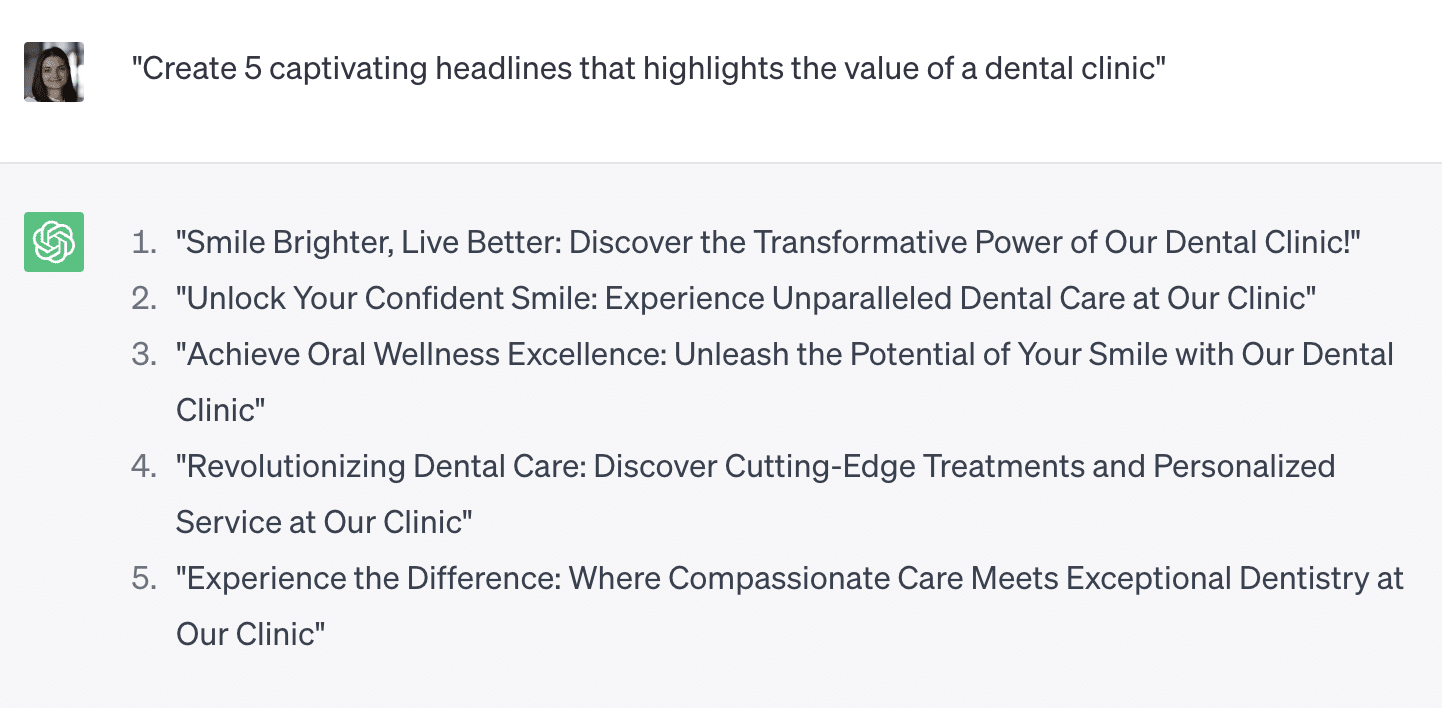
Add “keep it concise, max length 60 characters” to make it shorter and actually fit in the space without getting your headline crowded.
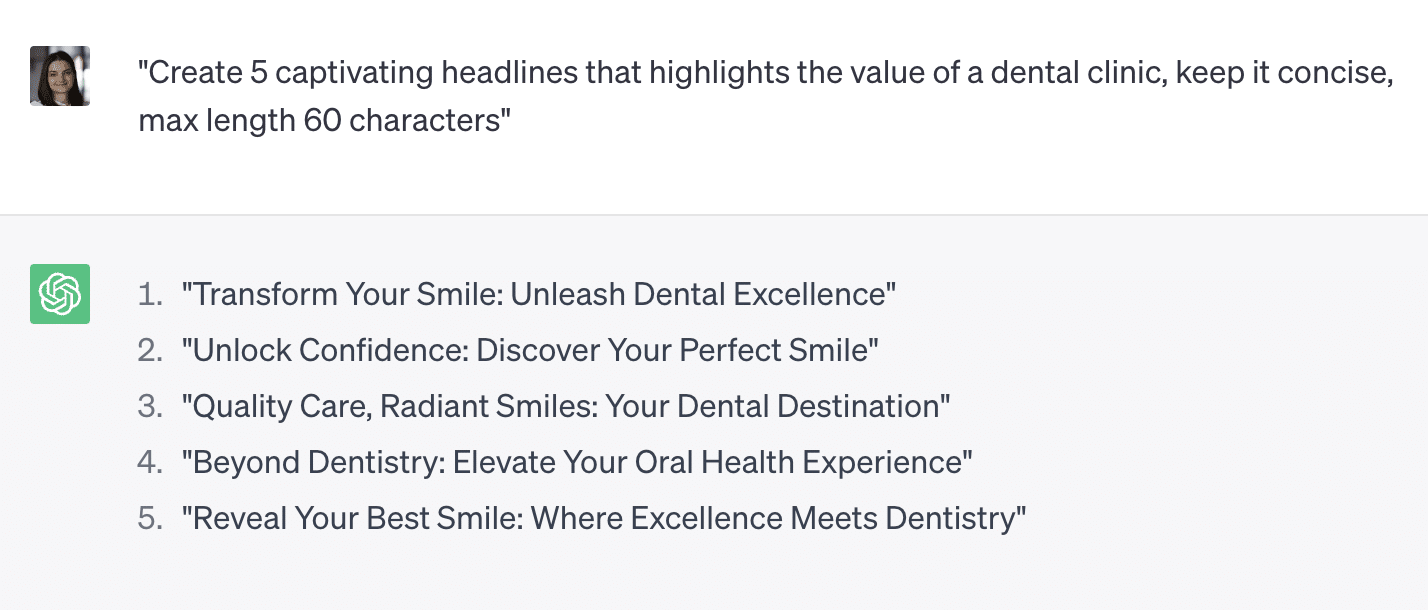
“Craft a headline that addresses your target audience’s pain points, [list pain points]”
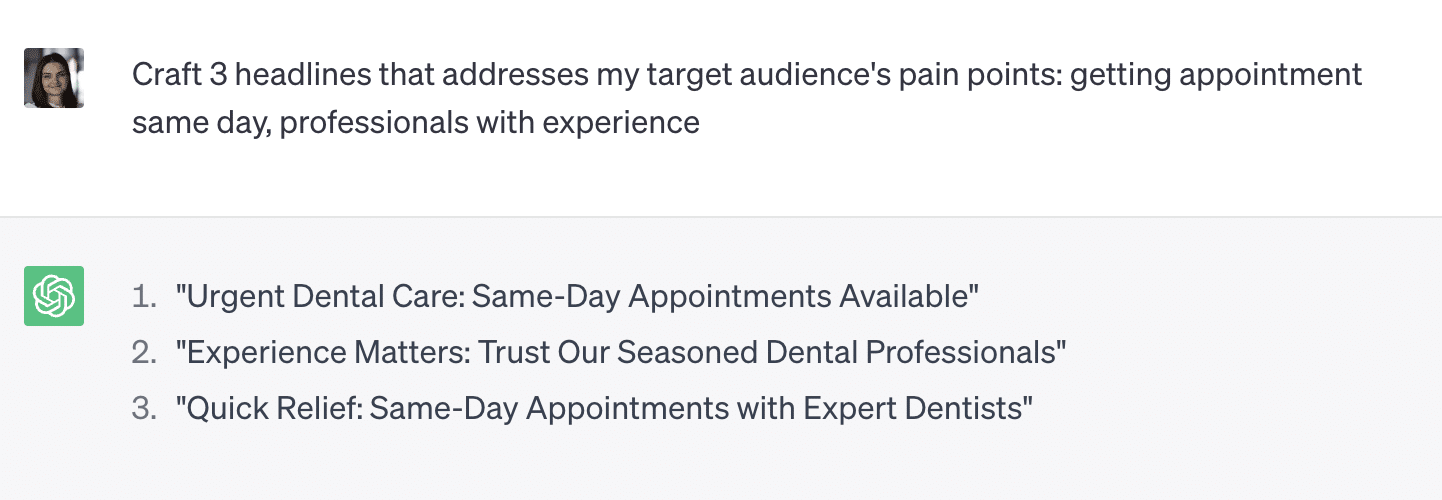
Of course, not everything that the AI suggests would fit you perfectly fine, but it can provide you with ideas or versions of headlines that are good enough to start with.
2. Crafting Effective Call-to-Action (CTA)
After capturing the visitors’ attention, you need to direct it to guide them towards desired actions. For that, you use Call to Actions (CTAs). ChatGPT can assist you in creating impactful CTAs that encourage conversions. You can use prompts like
“Generate a persuasive CTA that compels visitors to take action [specify]”
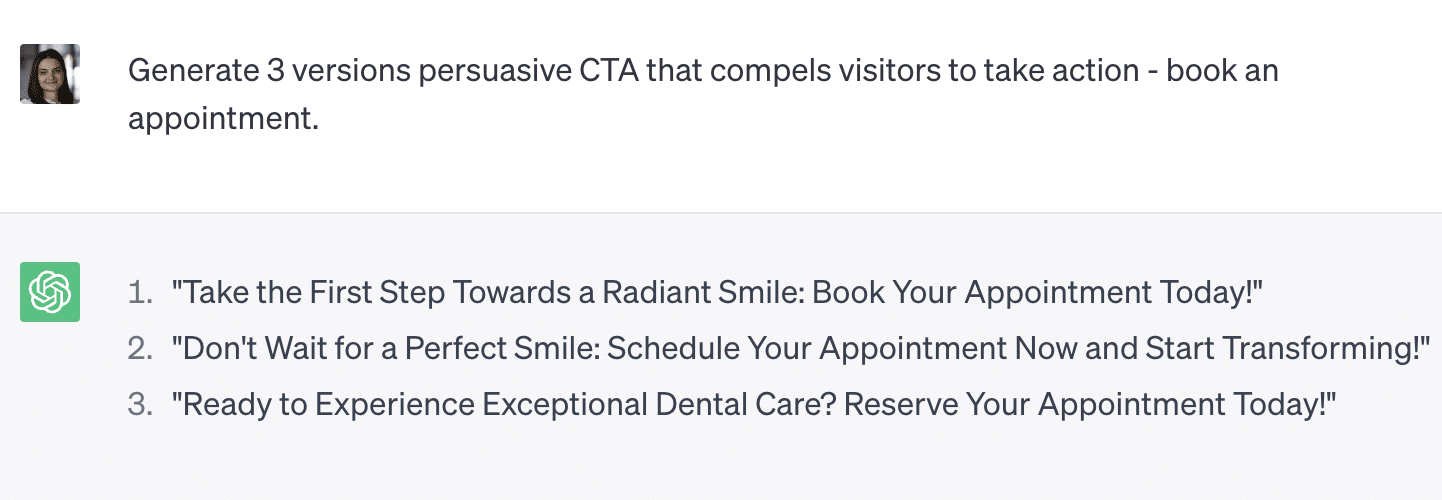
Now, let’s specify where the CTA goes to get a version that fits on a button:
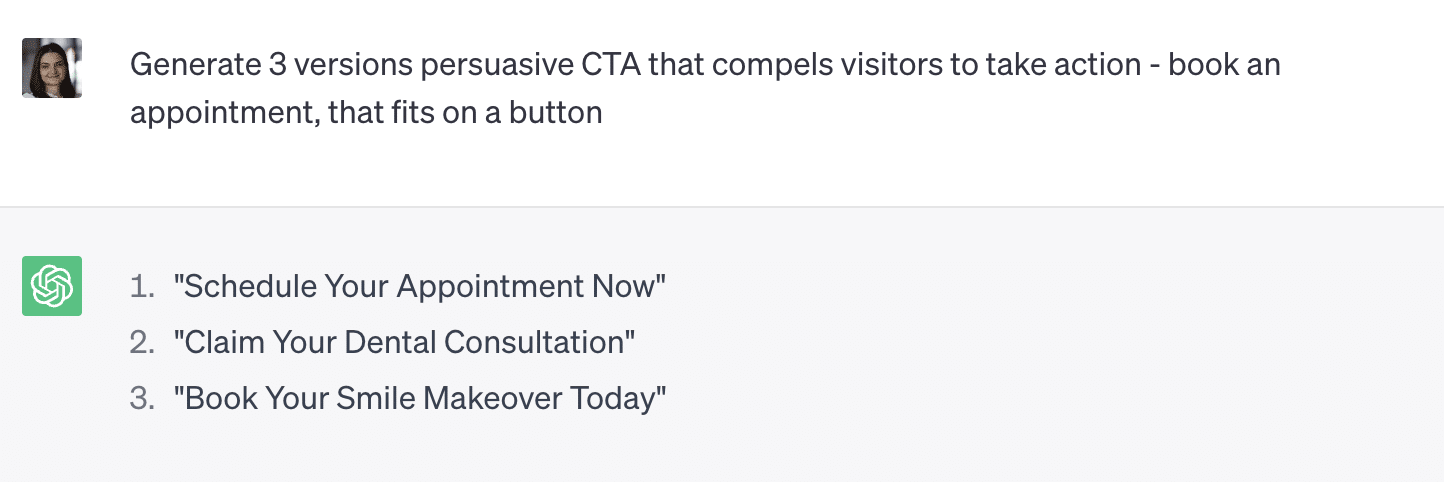
By utilizing ChatGPT, you can experiment with various CTAs and choose the ones that resonate most with your target audience. To understand if your CTAs work, you can A/B test them or use behavior analytics tools such as heatmaps or session recordings to see how your website visitors interact with CTAs.
3. Formulating a Clear and Concise Value Proposition
A well-defined value proposition is crucial for capturing visitors’ attention and convincing them to choose your product or service. For that, you can also use ChatGPT – with the right input it can craft value propositions that are clear, concise, and compelling. You can use prompts like
“Summarize the key benefits of your product or service in a single sentence”

“Craft a value proposition that addresses your target audience’s pain points and offers a unique solution”
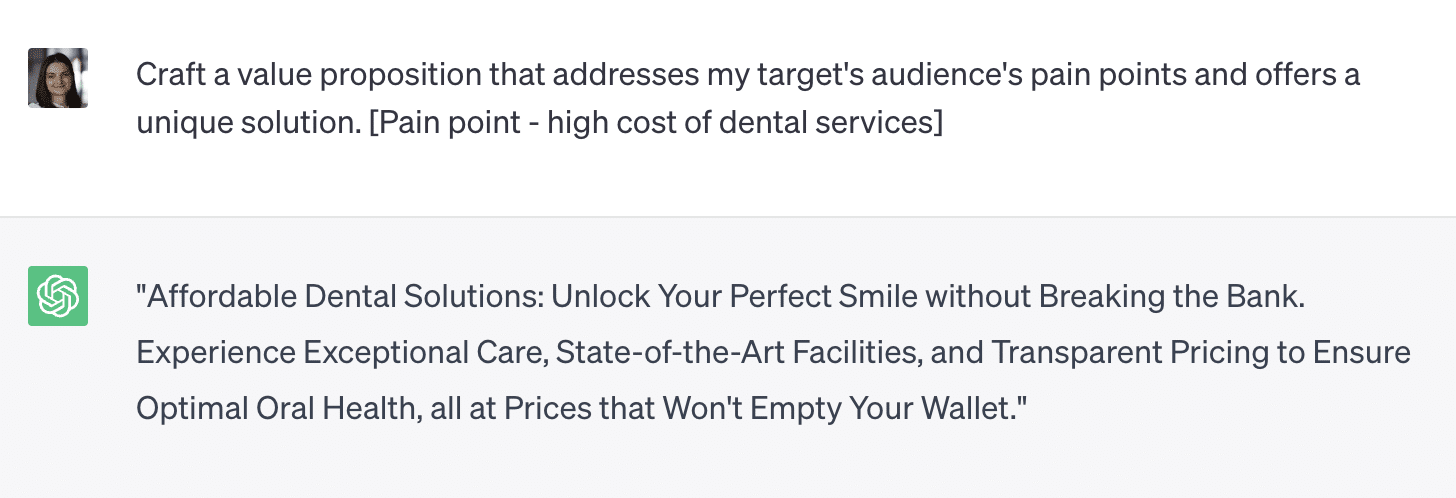
No, ChatGPT won’t replace your product marketers. But it can help them with creating value propositions by generating different versions that they can use as starting points.
4. Formulating a Clearly Defined Competitive Advantage
To stand out in a saturated market, it is essential to clearly articulate your competitive advantage. There’s a difference between a value proposition and competitive advantages. While your value proposition is about what it is that your product can do for your target audience, your competitive advantage is about how it does it better than the other products with similar capabilities.
ChatGPT can help you generate prompts that highlight your unique selling points. For example, you can use prompts like
“Summarize my competitive advantage in a concise and compelling manner”
and let Chat GPT provide you with some examples.
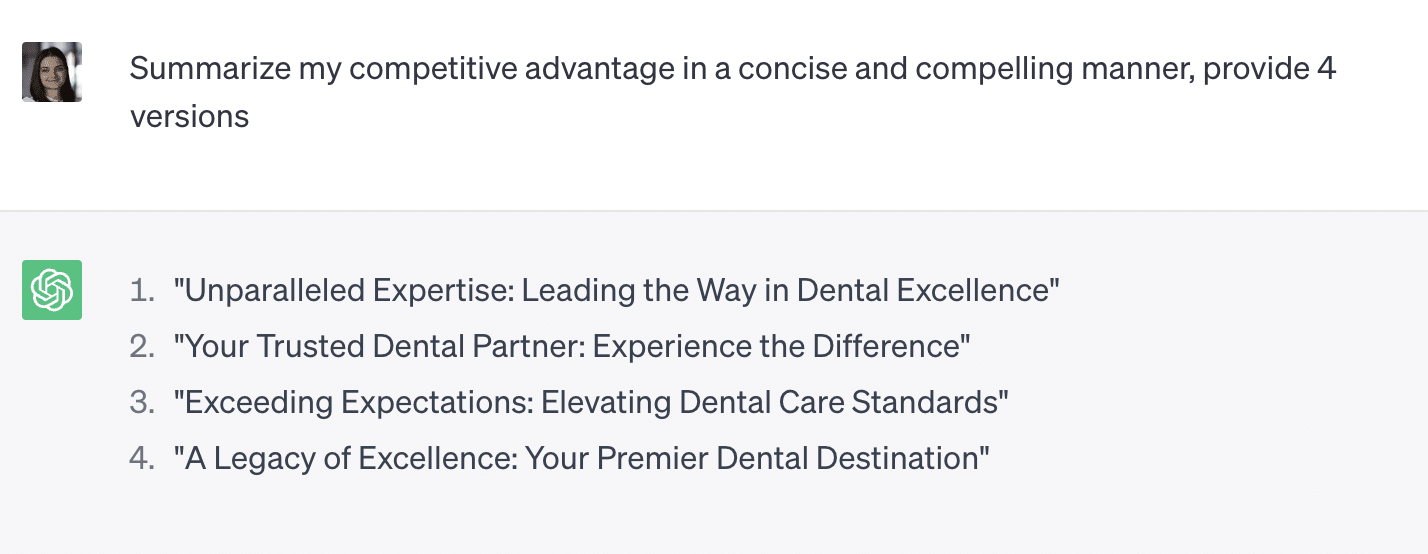
You can also specify a certain competitive advantage to generate statements around it:
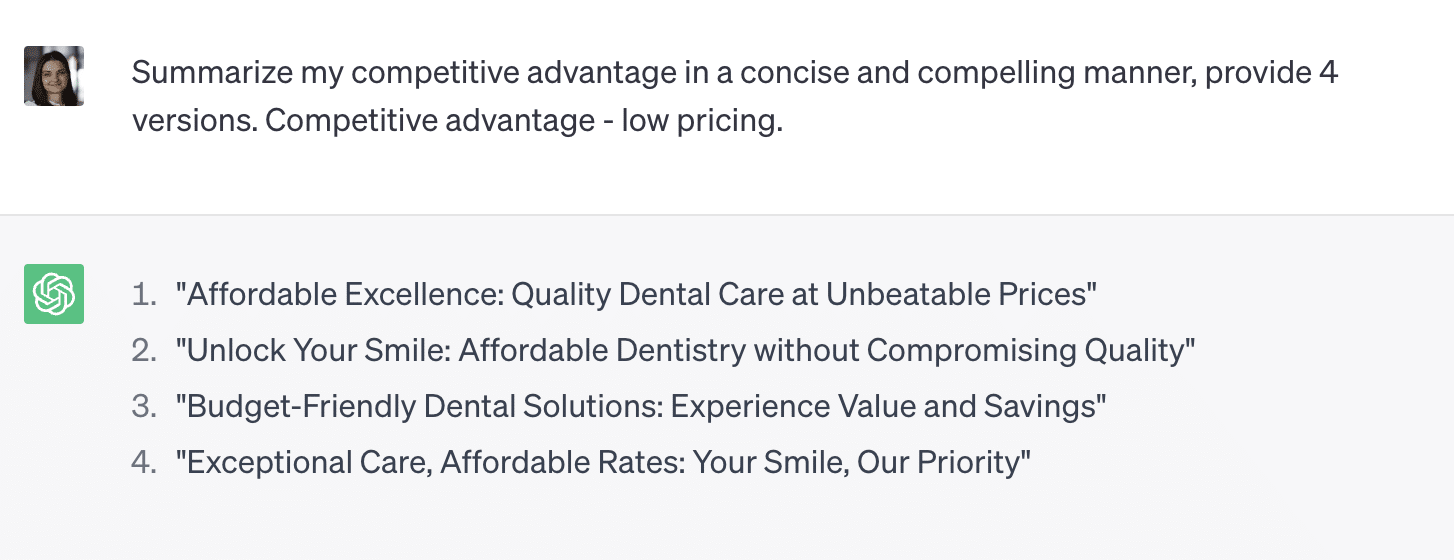
“Create a message that showcases why your product or service is superior to competitors”

By leveraging ChatGPT, you can effectively communicate your competitive advantage and differentiate yourself from the rest of the players in the same niche.
5. Addressing Target Audiences' Concerns
Understanding and addressing your target audience’s main concerns is crucial for building trust and credibility. Basically, all the content that you create should be doing exactly that – addressing pain points of your potential users. ChatGPT can assist in researching and addressing these concerns effectively. You can use prompts like
“Identify the top three concerns of your target audience and propose solutions. [Specify service/product and any other relevant information]”


“Generate informative content that addresses common questions and objections of your potential customers”

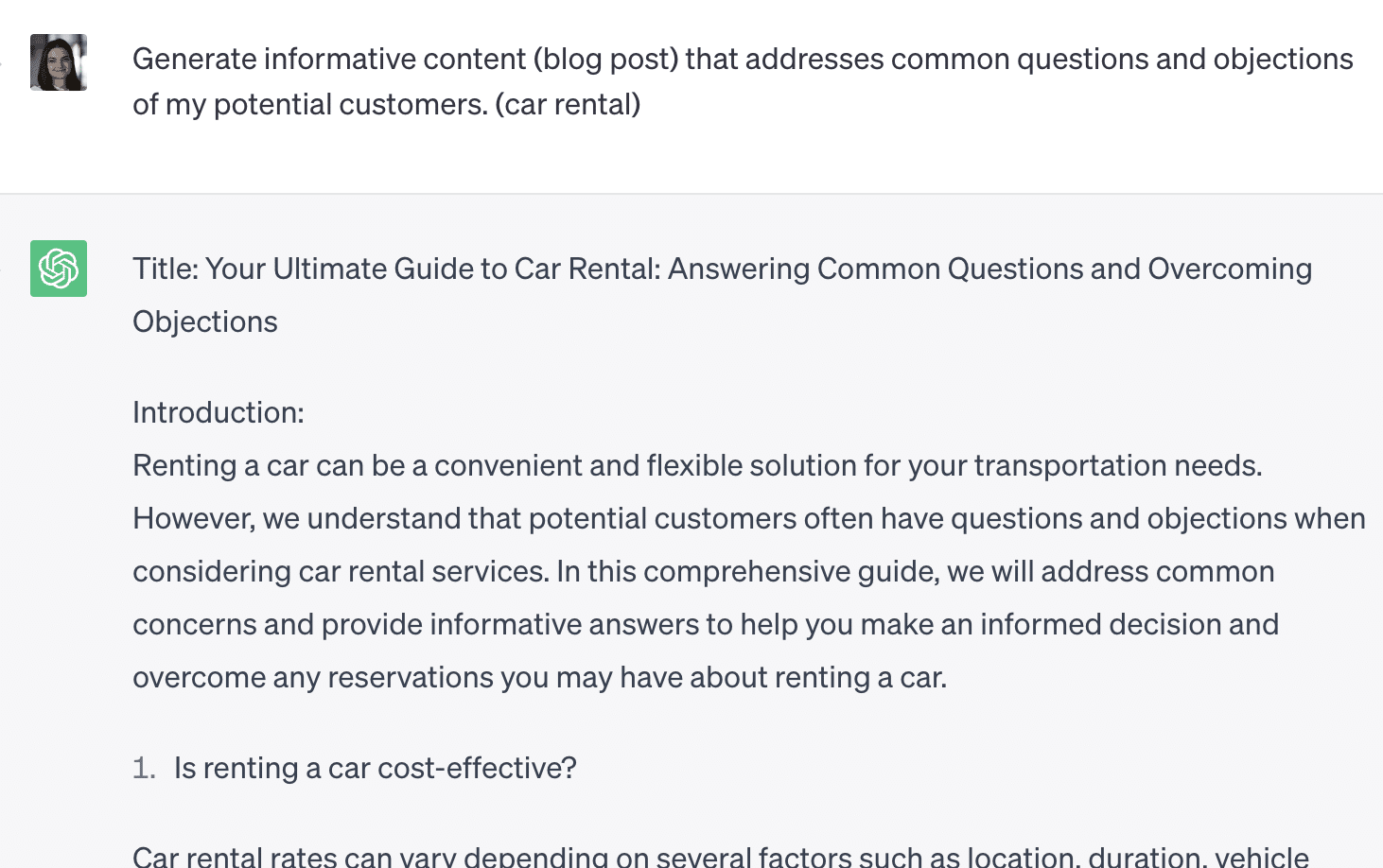
By utilizing ChatGPT, you can get ideas for valuable content that resonates with your audience and alleviates their concerns.
6. Checklist of Necessary Website Elements
Creating an effective landing page requires careful consideration of various elements – and there’s no one-size-fits-all solution, as for different use cases these landing pages might need to look very differently.
ChatGPT can help you generate a checklist (actually, it’s really good at checklists of different sorts) of essential website elements based on your page’s purpose. For instance, you can use prompts like
“List the necessary sections and components for an e-commerce landing page”
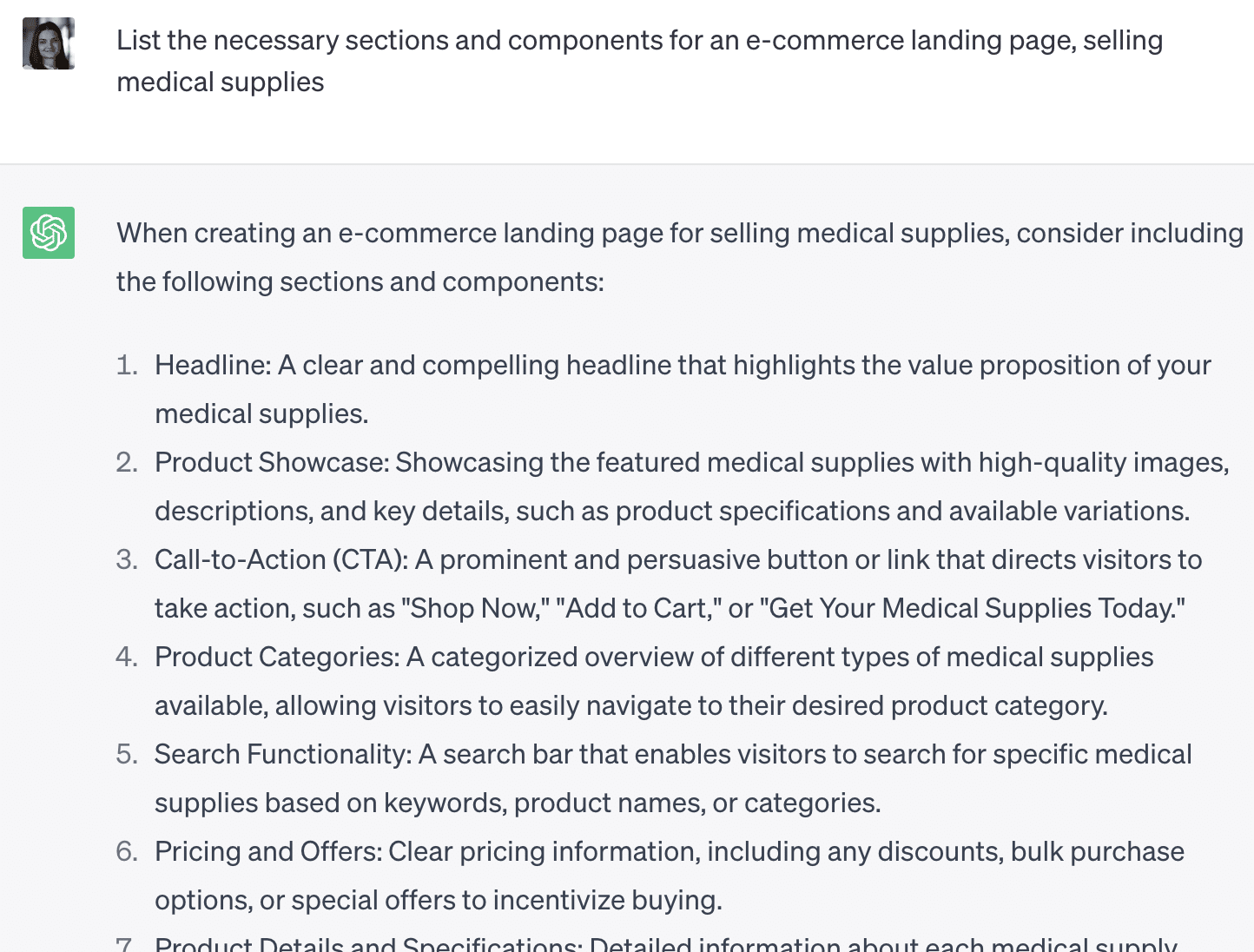
“Outline the key elements for a lead generation landing page”
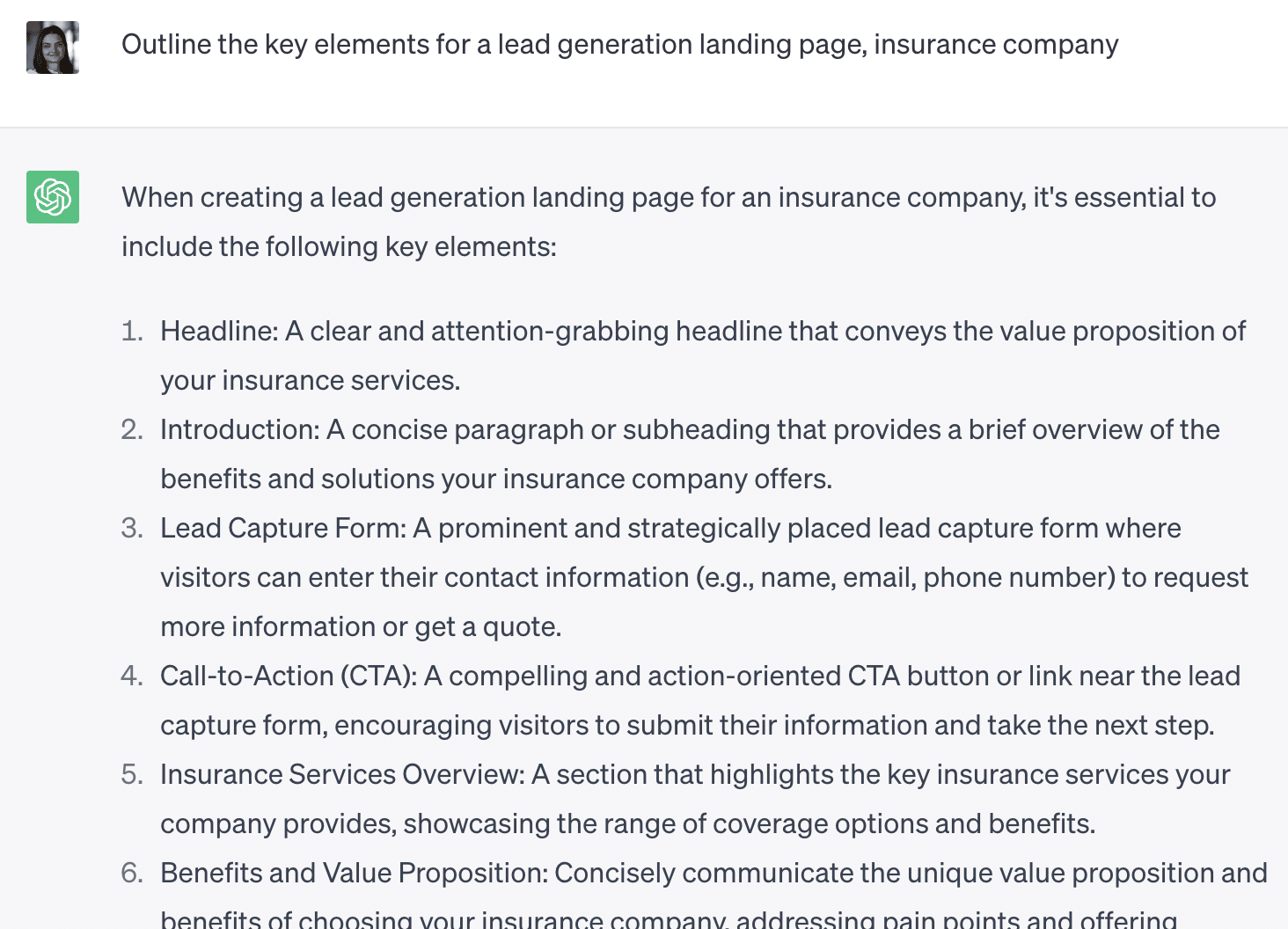
By leveraging ChatGPT, you can ensure that your landing page contains all the vital elements needed to drive conversions. This checklist, for example, could be a useful part of a brief for a designer that you would task with outlining your website layout. Or for yourself, just so that you don’t forget something important.
7. Enhancing Product Descriptions
Compelling product descriptions can significantly impact conversions. ChatGPT can assist in creating engaging and persuasive product descriptions that highlight the unique features and benefits of your offerings. You can use prompts like
“Generate a product description that evokes emotions and paints a vivid picture of the user experience”

“Craft a product description that showcases the problem-solving capabilities of your product”

By leveraging ChatGPT, you can create high-quality and persuasive content that convinces visitors to make a purchase. You can also use ChatGPT to write FAQ sections, that are a must-have for product page search engine optimization (SEO), and use it for other product page optimizations.
8. Doing Keyword Research with ChatGPT
Speaking of SEO, ChatGPT can help you identify relevant keywords for your landing page content. You can use prompts like
“Suggest a list of relevant keywords that align with your product or service”
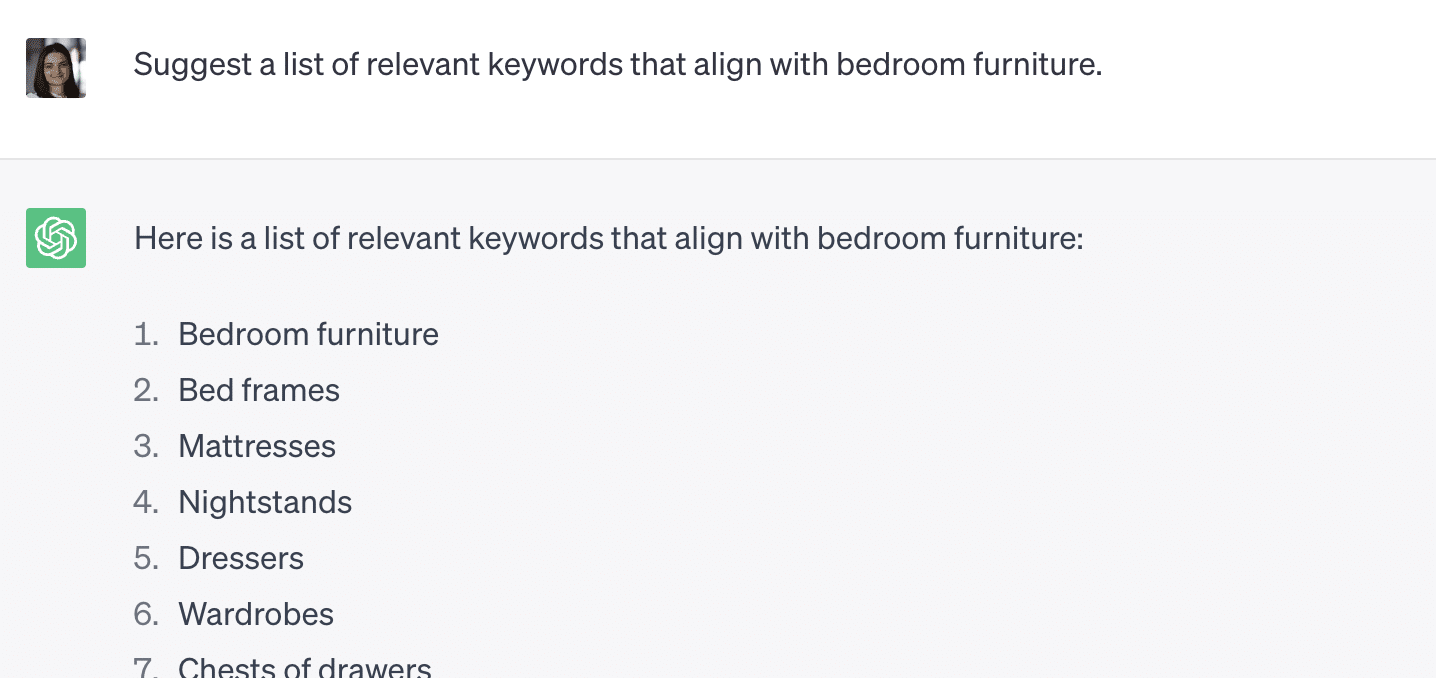
Note, that ChatGPT does not directly perform keyword research like SEO tools do, so it won’t give you volume and intent, for example. But it can be useful to get a list of so-called seed keywords, that you can use as a starting point for further keyword research. Also, ChatGPT can be helpful for grouping keywords into topic clusters.
9. Optimizing Titles and Meta Descriptions
There are more things related to SEO that ChatGPT can help you with. For example, it can assist in creating compelling titles and meta descriptions that entice users to click through to your website. You can use prompts like
“Craft an attention-grabbing title that includes relevant keywords, [link][word count]”
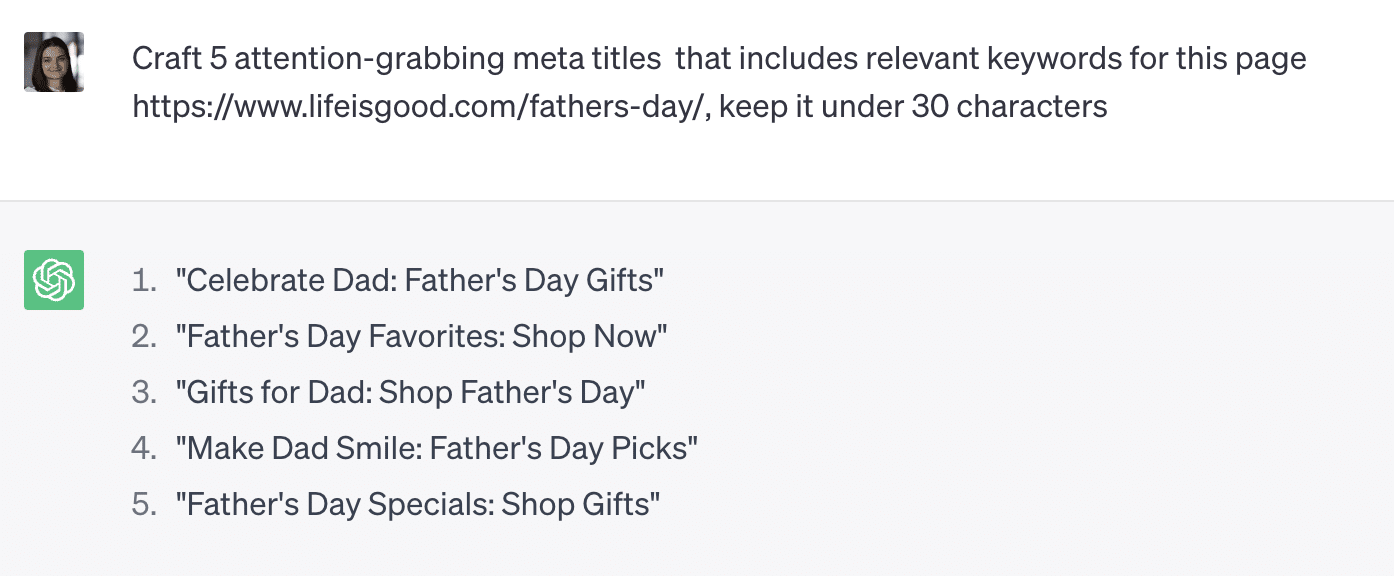
“Generate a concise and persuasive meta description that summarizes the benefits of visiting your website”

Also, for content syndication needs, experts recommend to republish your post to platforms like Medium, but changing the title. ChatGPT is a great tool for coming up with multiple titles for each piece of content, which is a tedious task if you’re trying to do it manually.
10. Tailoring Content to the Target Audience
Understanding your target audience is crucial for effective conversion rate optimization. ChatGPT can help you generate prompts that tailor your content to the specific needs and preferences of your target audience. For example, you can use prompts like
“Create a social media post that resonates with your target audience and encourages engagement”
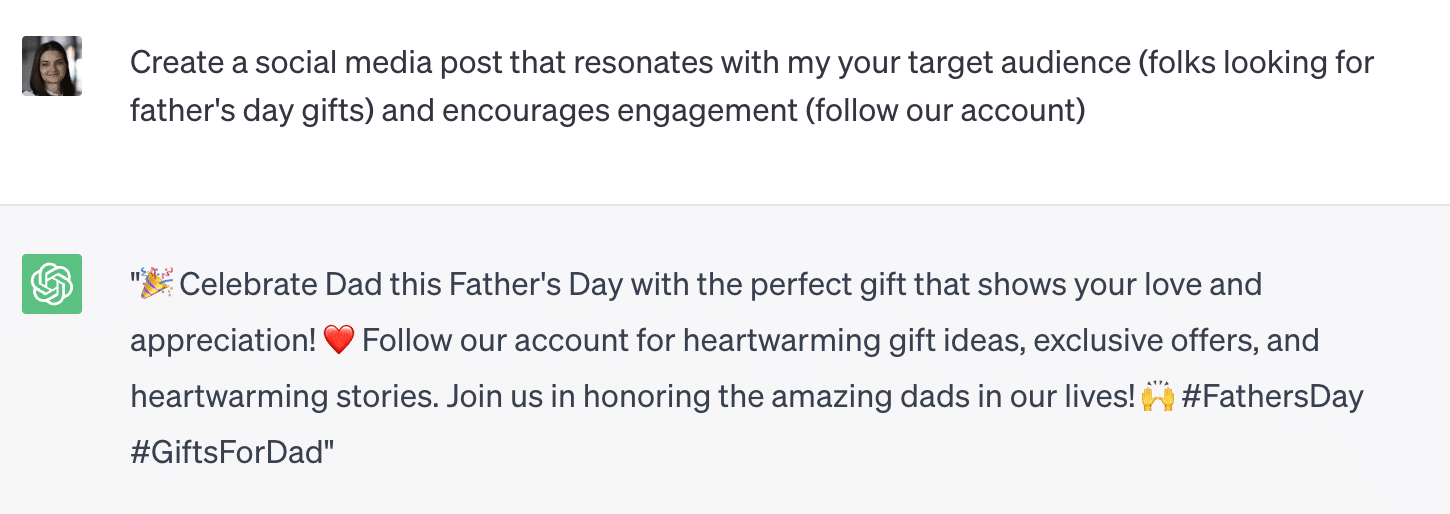
“Generate blog post ideas that address the pain points and interests of your ideal customers”
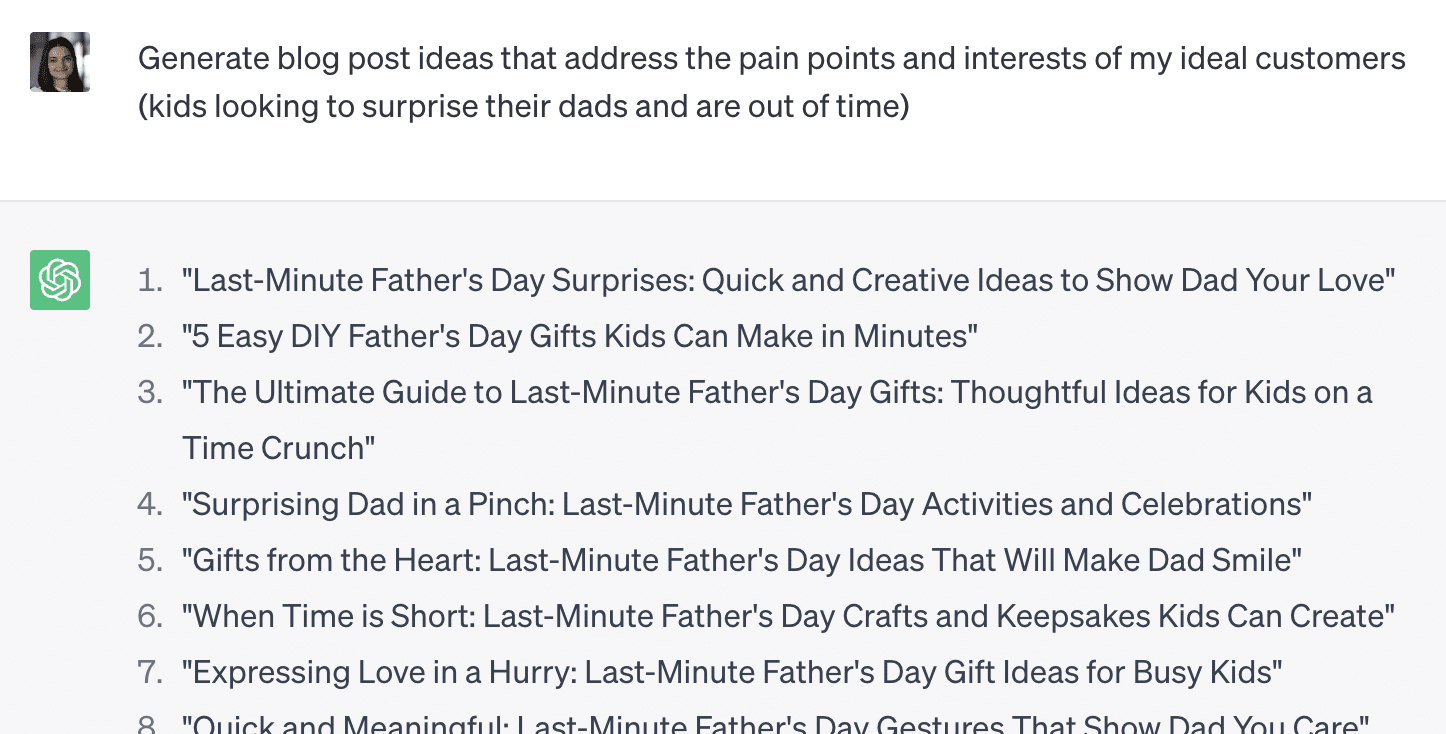
By utilizing ChatGPT, you can create personalized and relevant content that engages your target audience and increases conversions.
11. Generating Ideas for Content Marketing
Content marketing plays a significant role in driving conversions. ChatGPT can assist in creating content ideas and outlines for your content marketing campaigns. You can use prompts like
“Generate a list of blog post topics that align with your target audience’s interests and search trends”
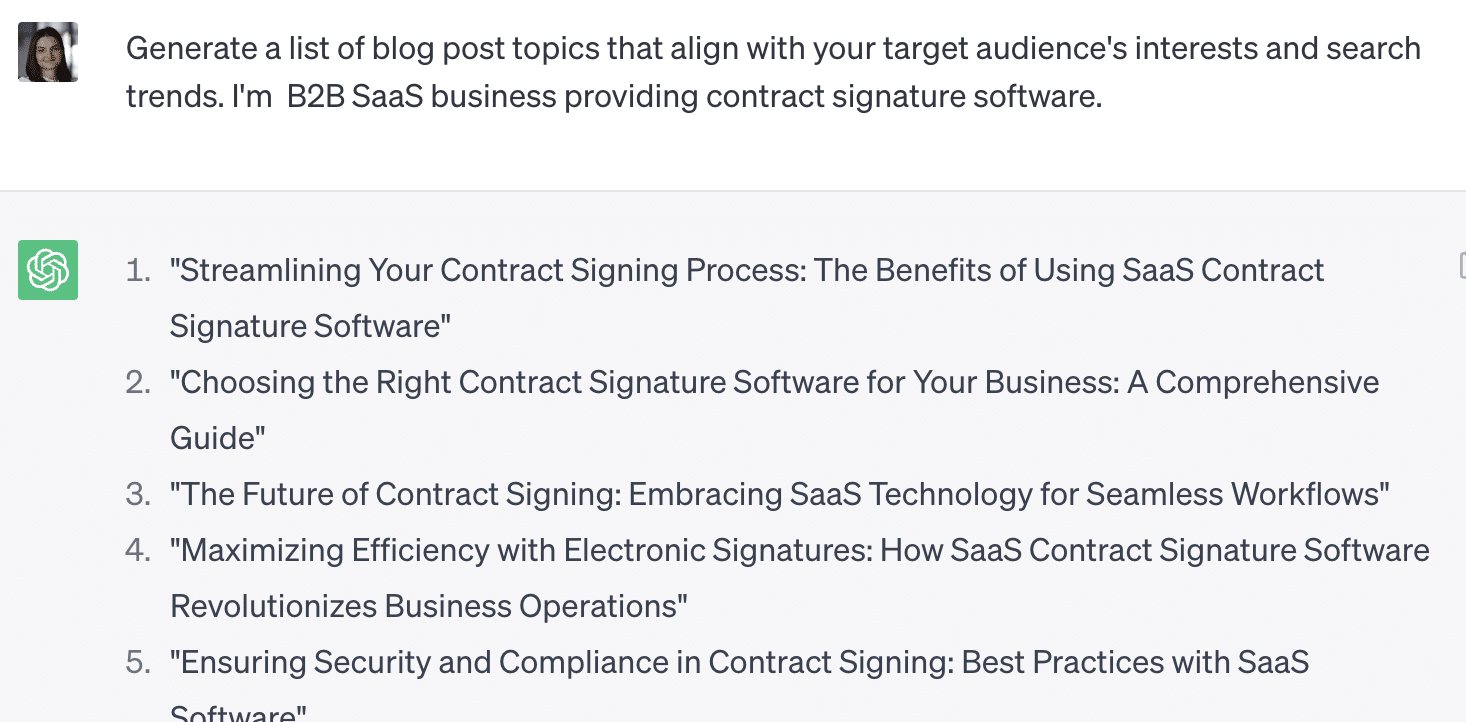
“Craft a content outline for an e-book that educates and informs your potential customers”
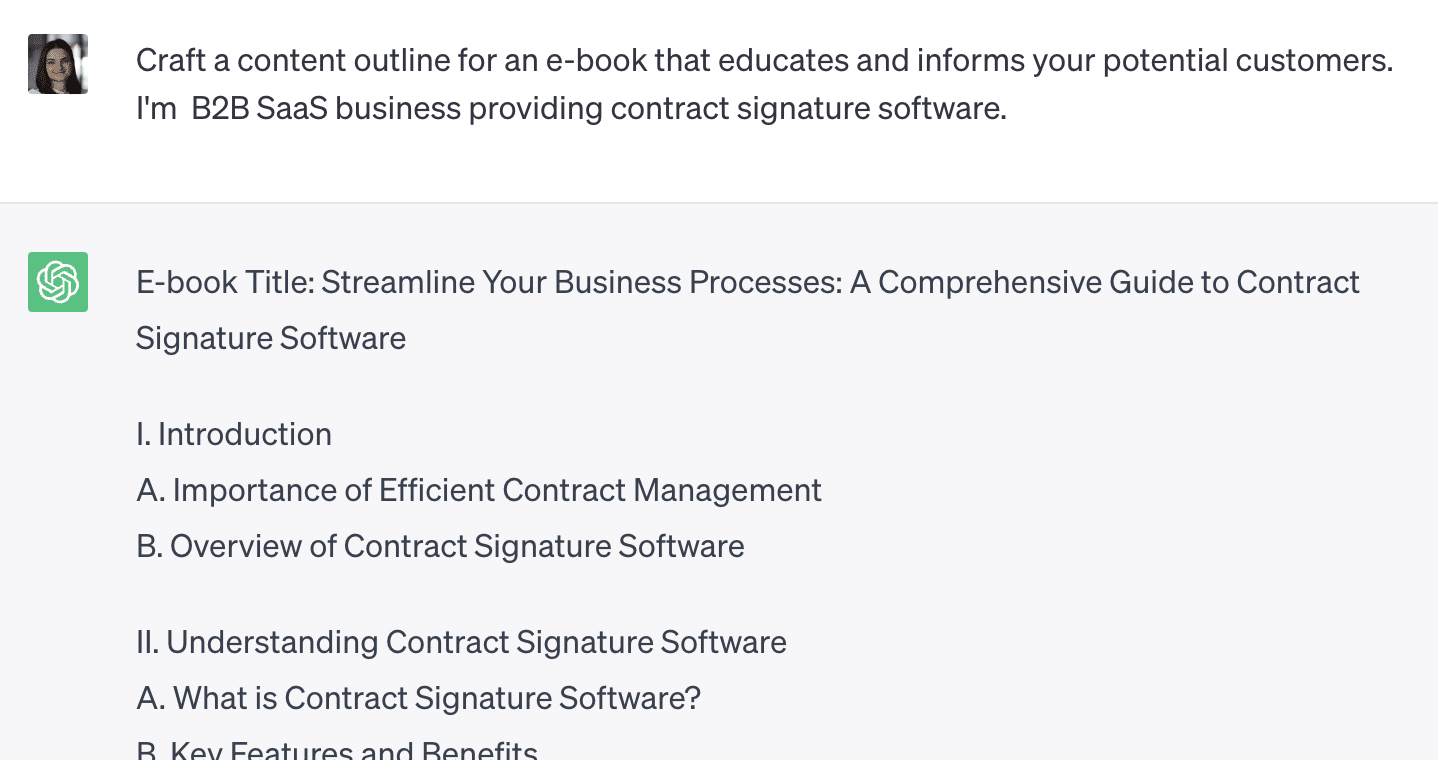
ChatGPT is great at creating content, and that’s what many people are already using it for. Remember, however, that to have an impact, your content needs to be human, helpful, and unique. While ChatGPT can quickly generate a lot of content for you, it’s up to you to edit it, adding the human touch, ensuring that it can really help, and incorporating your unique expertise and experience into it. Once done with all of that, you can revert back to ChatGPT to proofread your content piece – it can help you with grammar and commas.
After you’ve published your content, the next step is to understand how your website visitors consume it. And for that, we recommend using behavior analytics tools such as attention heatmaps, that can give you a clear picture of what is interesting for the visitors, and where do they stop to read or watch.
12. Generate A/B Test Ideas
Testing is crucial for conversion rate optimization. ChatCPT can come useful in generating alternative versions for different elements that you would like to A/B test. Also, you can specify what you want each of the versions to focus on:
“Generate [two] alternative versions of the [headline] for A/B testing. One should focus on [emphasizing the product’s unique features], while the other should [highlight the benefits for the customer]”
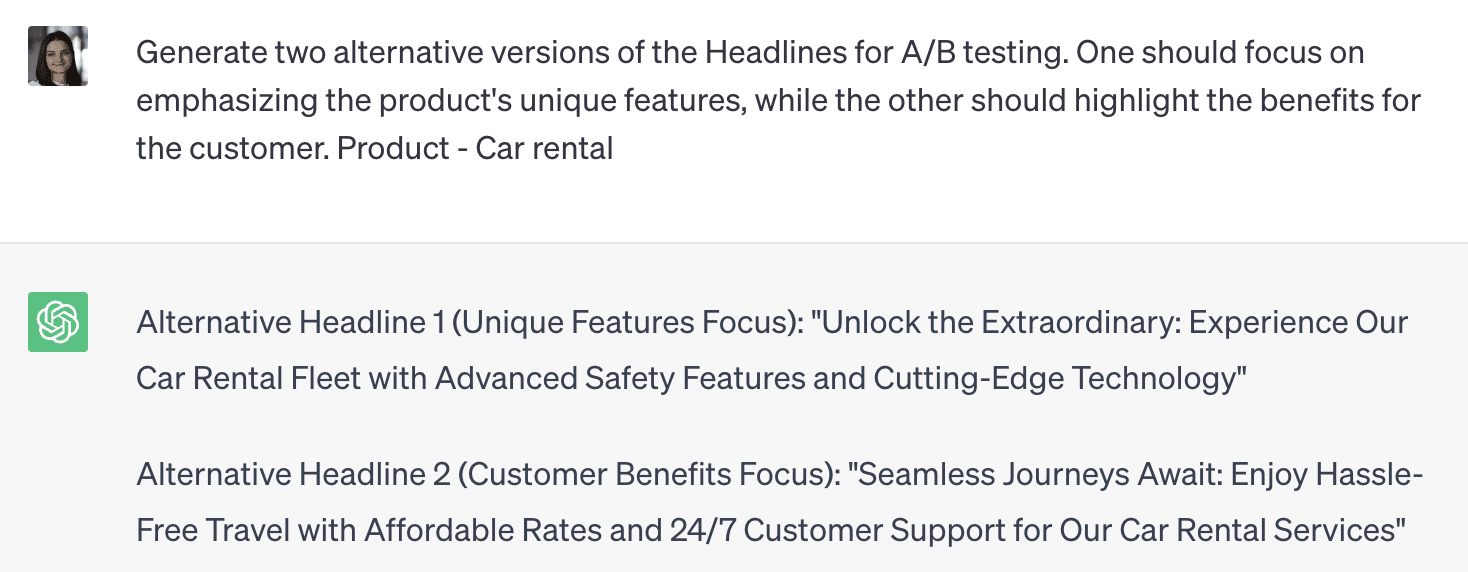
Leverage ChatGPT for A/B testing and gather ideas for effective tests. Here are some ideas for CRO tests that you can begin with.
Conclusion
In a digital landscape where website conversion rate optimization is crucial for success, leveraging advanced technologies like ChatGPT can provide digital marketers, website owners, and managers with a leverage. By following the actionable steps outlined in this article and utilizing specific ChatGPT prompts, you can optimize your landing page, craft compelling headlines and CTAs, formulate a clear value proposition, address audience concerns, and enhance your overall conversion rate.
With ChatGPT’s natural language processing capabilities and AI-powered assistance, you can overcome the pain points of limited resources and lack of data and insights.
To make the most out of ChatGPT prompts and ensure your AI-powered CRO efforts are successful, here are a few additional recommendations:
- Iterative Testing and Refinement: Just like with every other thing in marketing, with ChatGPT, experimentation is the key to success. Try out different prompts, analyze the results, and save what works as templates.
- Utilize ChatGPT as a Collaborative Tool: Involve your team members, including copywriters, content marketers, UX/UI designers, and marketing consultants, in the process of generating prompts. Collaboratively brainstorm and refine the prompts to leverage diverse perspectives and expertise. You can go as far as making instructions for using ChatGPT in your organization.
- Combine ChatGPT with User Feedback: While ChatGPT can come up with a lot of things, these things are only useful if they answer the real needs of your target audience. So, it’s essential to complement AI’s insights with direct feedback from your customers and prospects. Engage with them through surveys, user interviews, and usability testing to understand their preferences, pain points, and expectations. Incorporate this feedback into your prompts to create a more personalized and impactful user experience.
- Embrace Continuous Learning: As AI technologies evolve, stay updated with the latest advancements in natural language processing and AI-powered tools. Regularly explore new features, updates, and best practices to make the most of ChatGPT and other relevant tools for conversion rate optimization. Well, you’ve read this article, so you are obviously doing that already, but we just want to urge you to never stop.
Finally, remember, ChatGPT is a powerful tool that can provide guidance and inspiration, but it’s important to strike a balance between automation and human touch. While AI can assist in generating prompts and content, human creativity, intuition, and strategic thinking are still essential for success in any area, including conversion rate optimization.
So, take advantage of ChatGPT and its prompts to optimize your landing page, captivate your audience, and drive meaningful conversions. Embrace the power of AI in your conversion rate optimization efforts, and watch your website’s performance soar. Happy optmizing!
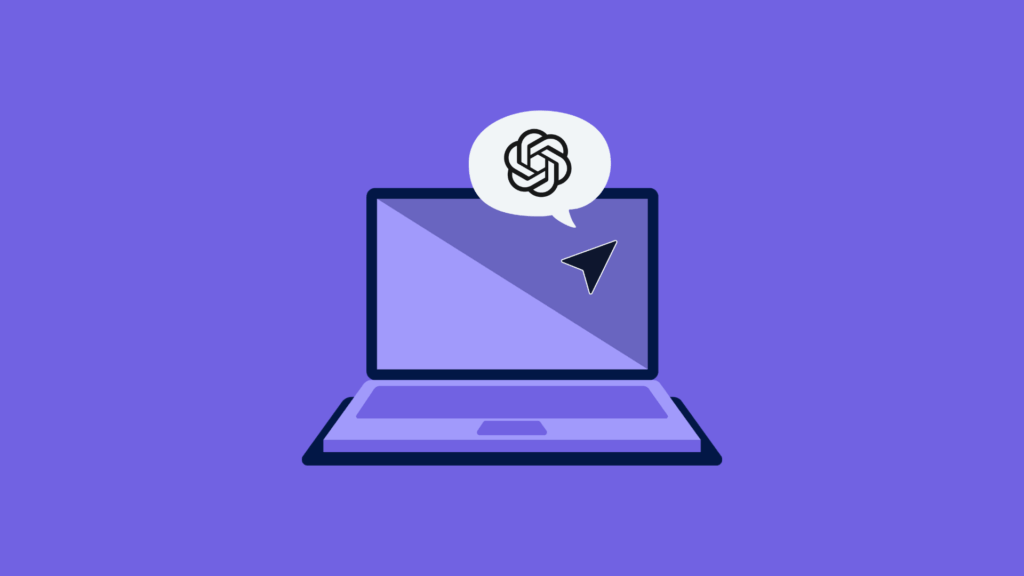

13. Social Proof
Social proof, such as customer testimonials and reviews, is a powerful tool for boosting conversions. No, we are not encouraging you to create fake testimonials using ChatGPT. That’s cheating, and once people realize it, it can really hurt trust. However, you can use ChatGPT to help you generate emails or surveys that encourage customers to provide feedback and testimonials. And that can be really helpful. For instance, you can use prompts like
“Craft an email asking customers to share their positive experiences and provide testimonials”
“Create a survey to gather feedback and reviews from your customers”
Crafting these prompts and surveys can be quite tedious, and ChatGPT really excels at it, saving you time and resources that you can spend collecting customer feedback. By the way, we have a great user feedback tool that you can use for that.